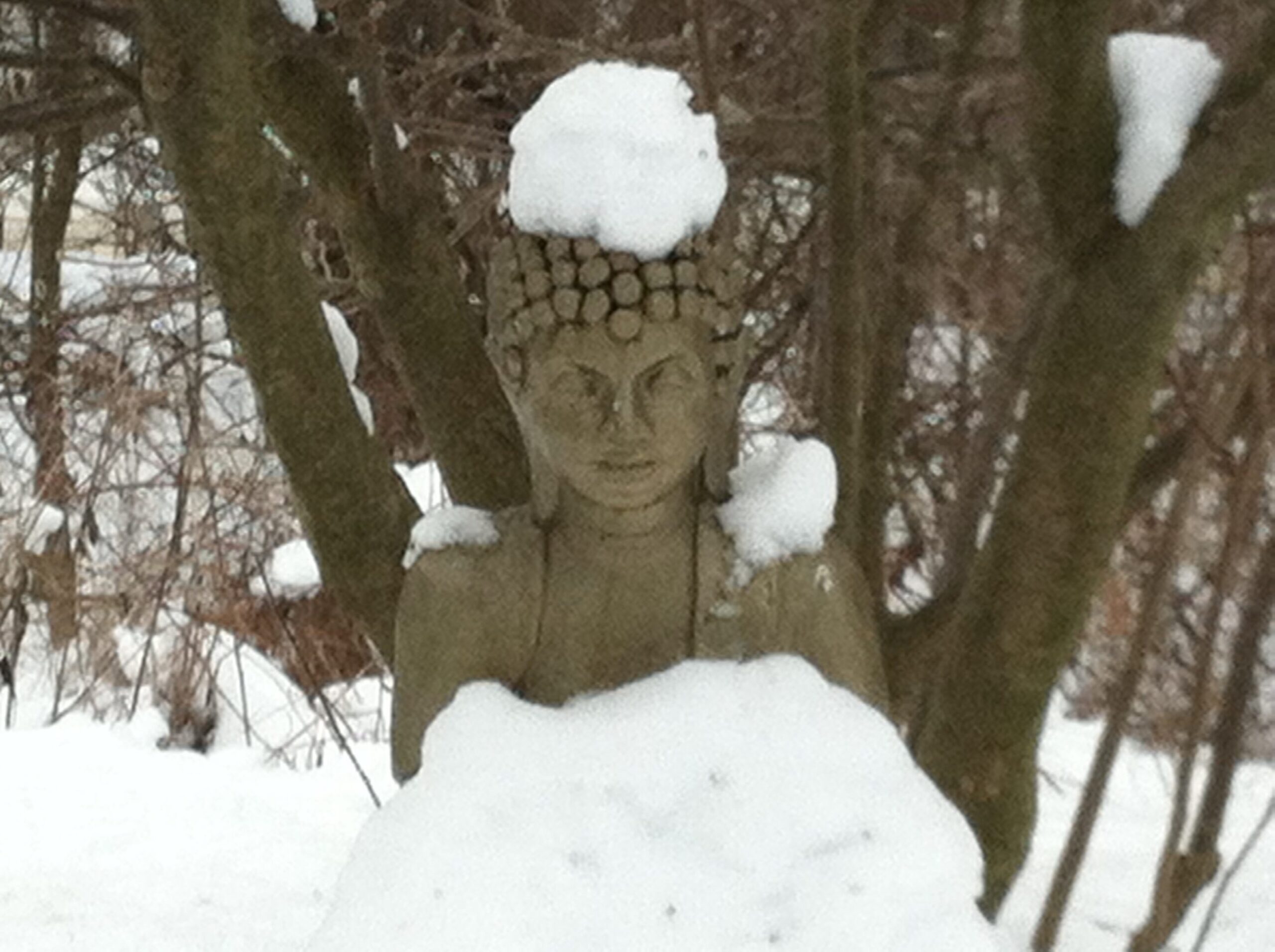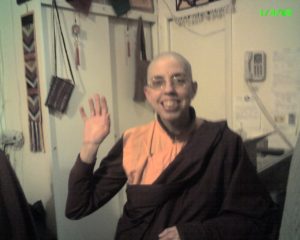March 2008
At first it was hard to get up and be ready to start the day’s meditation practice at the sound of the 4:00 a.m. gong. Just under two months into retreat, I look forward to it (at least, most of the time). The first practice we do each morning is breathtakingly beautiful, and the day goes on from there.
Our day is divided into four meditation sessions, called thuns (pronounced toons, but with the o’s more like those in look), which we do in our rooms, on our own. The shortest lasts an hour and a half, the longest almost three hours. These periods are devoted to the current practice that we must complete. As I write this, we are working on the ngondro, or preliminary practices. We spent a month studying and contemplating the common preliminaries, the four thoughts that turn or redirect the mind from worldly to spiritual concerns, a week on each of them. (If you want to review them, there should be a post called “Four Thoughts.”) Now we are working on what are called the uncommon or extraordinary preliminaries, a set of four hands-on practices that will prepare us to move on to the more advanced practices that have the potential (if we apply ourselves) to speed our minds toward awakening during the last two years of retreat. These intensive practices could become tedious done for hours on end, if we don’t keep our minds on the goal rather than the repetition.
One of Rinpoche’s students once expressed skepticism that she could actually reach the goal by doing the practices; it seems so, well, unattainable. He replied that it is just like starting a car; if you turn the key in the ignition, the motor comes on. Just like that.
Vajrayana Buddhism, the form practiced in Tibet, may not be everyone’s cup of tea, with its ornate rituals, complex visualizations, and numerous bells and whistles. It’s not the only path to awakening, and we all pick the one that most appeals to us. But it is a tried-and-true path; it has worked for many centuries, and been handed down from teacher to teacher, generation to generation, in an unbroken, precious lineage. We don’t have to rely solely on faith to believe this; we have living, highly realized teachers who demonstrate it every day of the week. If you don’t believe me…look up an authentic Lama, preferably one of the old school, actually trained in Tibet and India, and recognized by a genuine practice lineage, and spend some time in his or her presence, if you can. (That opportunity is getting rarer by the day.)
Besides the individual meditation sessions in our rooms, we spend about four hours a day in group chanting practices, two hours in the morning and two in the evening. Each session consists of a number of different practices and prayers, each designed to fulfill a different purpose, all in the service of awakening our minds and connecting us with powerful positive forces in the universe and deep within our own minds. These sessions have a very different energy from the room practice; the two complement each other and make each day feel complete.
It is not a design-your-own kind of retreat—bring in the books you’ve always wanted to read and your journal, do some hiking, take a dip in the lake, etc. The schedule is quite rigorous, and the program very specific, with pretty much every minute accounted for; it can barely be covered in three years and three months, so we are always pushing ourselves hard. The other kind of retreat has its appeal, but at the end, what would you have achieved, besides at best a nice, relaxing three-year vacation now at an end? Our retreat is a recipe for success, designed and thoroughly tested by people who achieved the goals we are seeking.
All the practices done in three-year retreat, at least in the first part, are also accessible to laypeople outside the retreat setting. The same chanting practices are done daily in the monastery’s main shrine room. Anyone may attend and participate. The preliminary practices we are working on now are also available to anyone interested in undertaking them. If you finish the preliminary practices, you can go on to the more advanced ones. But it’s relatively rare for practitioners to finish all the preliminaries outside retreat, as the practices take quite a lot of time, focus, and discipline, all of which can be hard to find in the midst of a busy household life.
Men and women do retreat separately. There is always a men’s retreat and a women’s retreat taking place concurrently, each in its own house. The roof of the men’s retreat house is visible from my window.
Being cloistered with a small group of people day after day for years on end can have its tricky parts. I am very fortunate to be in retreat with a relatively easygoing, mutually supportive group of women, six of us in all, plus two nurturing caretakers.Of course, there are potential annoyances, but two months in, so far so good. Overlooking or dealing generously with minor (and major) sources of friction is a practice that is integral to the retreat experience. When people suggest to Rinpoche that they would like to do a solitary retreat rather than a group one, he generally laughs and informs them that in solitary retreat they would never have the chance to confront and iron out their emotional rough edges. It’s easy to think you are more spiritually developed than you really are, if there is no one around to push your buttons or tempt you to push theirs.
In some ways, being in retreat feels like traveling back in time. Sometimes it’s the 16th century, sort of Girl with A Pearl Earring with a Tibetan theme—the long skirts, the intricate handmade dough-and-butter offering cakes, the time-honored rituals, performed to the best of our ability just as they have been done for hundreds of years. On the other hand, we have electric lights, running water, hot showers (even if no time to take them!), a washer and dryer, a propane stove and heater. And then there are moments when you could swear you’ve been propelled into some alternative universe of the distant future. It’s a strange mix of technologies, and you can travel many generations from one moment to the next.
During the chanting on these winter evenings, when it gets dark early, in our cozy shrine room painted in rich, warm shades of red, orange, and yellow, with the shrinekeepers bustling about while the rest of us chant—making sure candles are lit, emptying and drying the dozens of fine copper water offering bowls, performing the details of each ritual at just the right time in just the prescribed way, following exactly the same routine night after night—I am transported back over centuries, millenia. I feel a deep kinship with Vestal Virgins and Celtic priestesses, with medieval Catholic nuns in their cloisters, and with everyone else who has ever participated in ceremonies to tame the forces of darkness and concentrate the forces of light—internally, externally, in ourselves, and, we hope, in the world.
I am very happy here. I am at home.
See you in 2011!

